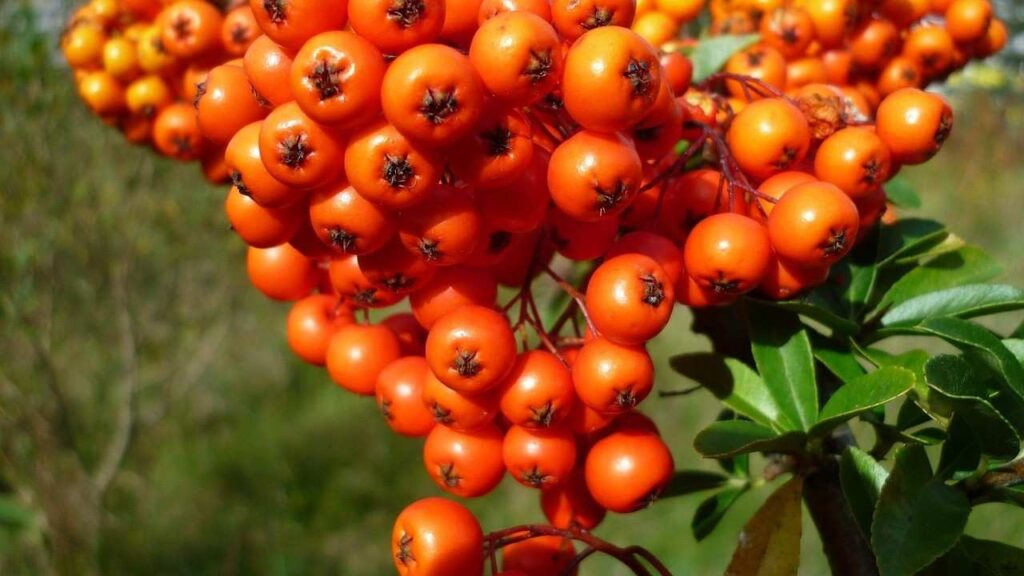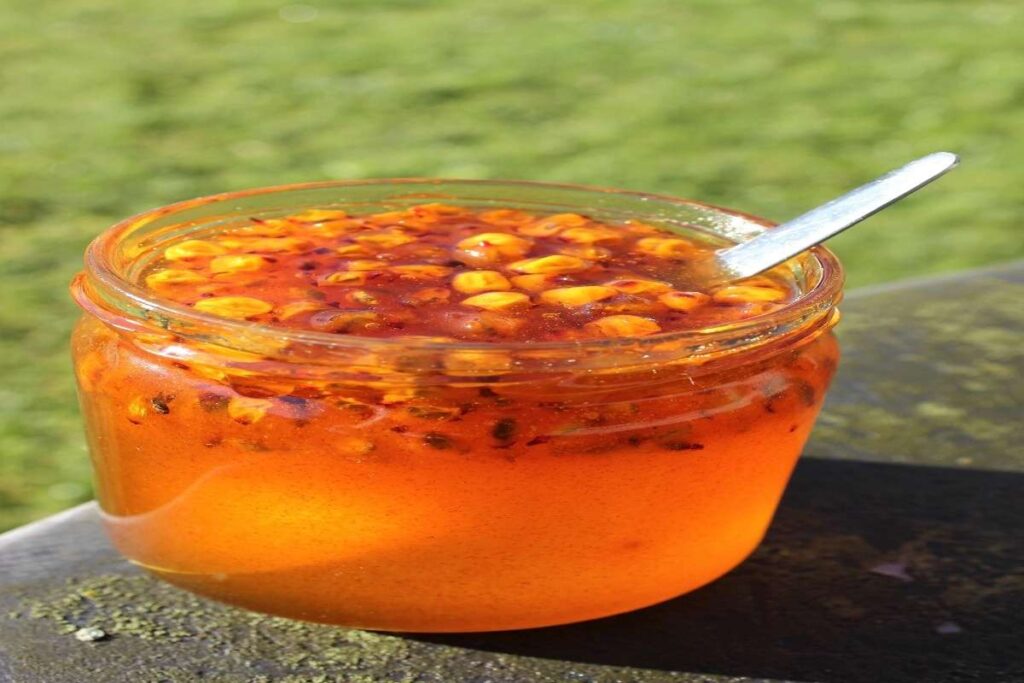Introduction to Seabuckthorn
Ever stumbled upon a golden-orange berry that seems to glow with life? That’s seabuckthorn for you. This little fruit holds more magic than meets the eye. Rich in nutrients, wrapped in history, and loaded with healing powers—it’s a gift from nature that you probably didn’t know you needed.
Table of Contents
What is Seabuckthorn?
Seabuckthorn (Hippophae rhamnoides) is a thorny shrub found mainly in the cold deserts and high-altitude regions of Asia and Europe. Despite its tough exterior, it bears one of the most nutrient-rich berries known to man.
Seabuckthorn in Hindi: What Do We Call It?
In Hindi, seabuckthorn is often referred to as “चूक” (Chuk) or “झंडु बेरी” in Ladakhi dialects. It’s revered in Indian traditional medicine, especially in regions like Ladakh and Himachal Pradesh, where it grows wild and free.

The Origin and History of Seabuckthorn
A Plant Rooted in Ancient Traditions
This isn’t just a new superfood trend. Seabuckthorn has been used for over 1,000 years in Tibetan, Chinese, and Mongolian medicine. Seabuckthorn was also fed to horses by ancient Greek warriors to give them muscular bodies and glossy coats. It’s been trusted for centuries—and for good reason.
Its Journey from Asia to the World
What began in the high-altitude Himalayas is now a global phenomenon. From Europe to North America, people are waking up to the magic of this berry.
Seabuckthorn Berry: The Heart of the Plant
A Tiny Berry with Mighty Powers
Don’t let its size fool you. Seabuckthorn berries are packed with over 190 bioactive compounds. That includes:
- Vitamins C, E, A, and B-complex
- Omega-3, 6, 7, and 9 fatty acids
- Powerful antioxidants
Nutritional Profile of Seabuckthorn Berry
Think of this berry as a multivitamin in natural form. It’s especially rich in Vitamin C—up to 12 times more than oranges! That means a stronger immune system and better skin, all in one bite.
Seabuckthorn Uses in Daily Life
From Wellness to Skincare
This miracle plant isn’t just a trend. It’s a lifestyle.
Traditional Healing Practices
In Tibetan medicine, seabuckthorn was used for treating lung disorders, digestive issues, and even to promote emotional well-being.
Modern Applications
Today, you’ll find it in:
- Skincare serums
- Nutritional supplements
- Health drinks
- Hair oils
Seabuckthorn Juice Benefits

Immunity Booster
Feeling run-down? Seabuckthorn juice is your best friend. Your body’s natural defenses are strengthened by its strong antioxidant content.
Digestive Health
It soothes inflammation in the gut, aids in nutrient absorption, and can help regulate your metabolism.
Energy & Vitality
No more mid-day crashes! A shot of seabuckthorn juice gives you a clean, sustained energy boost without caffeine jitters.
Seabuckthorn Oil: Liquid Gold
Skincare Elixir
It hydrates, heals, and restores the skin’s natural glow. People who suffer from rosacea, eczema, and acne swear by it.
Healing and Anti-Inflammatory Properties
Topical use can reduce inflammation, repair skin damage, and even accelerate wound healing.
Seabuckthorn in Ayurveda and Traditional Medicine
An Ancient Remedy for Modern Problems
Seabuckthorn is used in Ayurveda to balance the Pitta and Vata doshas. It cleanses the liver, enhances vision, and regenerates bodily tissues (Rasayana).
How Indian Wellness Traditions Embrace Seabuckthorn
It’s used in herbal formulations for:
- Cardiovascular support
- Anti-aging
- Strengthening immunity
Seabuckthorn Products in the Market
Juice, Capsules, Oils and More
You can now find:
- Seabuckthorn juice concentrates
- Cold-pressed oils
- Capsules and tablets
- Skincare and haircare lines
Choosing Quality over Hype
Look for:
- Organic certification
- Cold-pressed extraction
- No artificial preservatives
Who Should Use Seabuckthorn?
If you’re someone who:
- Wants natural glowing skin
- Struggles with digestion
- Battles frequent colds
- Feels mentally and physically drained…
Then seabuckthorn could be exactly what your body’s been craving.
How to Consume Seabuckthorn Safely
Daily Dosage and Tips
- Juice: 15-30 ml/day
- Oil: 1 tsp orally or use topically
- Capsules: As directed by physician
Possible Side Effects (If Any)
While generally safe, some people may experience:
- Mild upset stomach
- Allergic reactions (rare)
When using skincare products, always do a patch test. .
Seabuckthorn for Beauty and Radiance
Glowing Skin
It reduces wrinkles, fine lines, and blemishes naturally due to its anti-aging properties.
Stronger Hair & Nails
Biotin and fatty acids work together to promote thicker hair and resilient nails.
Sustainability and Farming of Seabuckthorn
How It Helps the Environment
Seabuckthorn shrubs:
- Prevent soil erosion
- Enrich soil with nitrogen
- Support biodiversity
Ethical Harvesting Practices
Hand-picked and minimally processed—because nature deserves respect.
DIY Recipes Using Seabuckthorn
Homemade Skincare Recipes
- Face mask: Mix seabuckthorn oil with honey and turmeric
- Hair oil: Blend with castor oil for deep conditioning
Energy-Boosting Smoothie Ideas
- Seabuckthorn juice
- Banana
- Almond milk
- Flax seeds
Blend & power up!
Real People, Real Results
Testimonials and Transformations
“After 2 weeks of seabuckthorn juice, my skin felt like I had a facial every day!” – Priya, 32
“My eczema got cleared by using seabuckthorn oil—nothing else worked!” – Aman, 27
Conclusion
Seabuckthorn isn’t just a berry—it’s a miracle of nature, hiding in plain sight. Whether you’re struggling with health issues, skincare problems, or simply seeking a natural boost, this golden berry can be your healer, helper, and hero.
Don’t wait for a prescription—start with a plant.
FAQs About Seabuckthorn
1. What is the best way to take seabuckthorn daily?
Juice and oil are the most common forms—ideal for internal and external use.
2. Can seabuckthorn help with weight loss?
It supports digestion and metabolism, which may indirectly help with healthy weight management.
3. Is seabuckthorn safe for children?
Yes, in moderation. Consult a pediatrician for dosage.
4. How does seabuckthorn taste?
It’s tangy and slightly sour—think of it like a tropical citrus fruit.5. Where can I buy authentic seabuckthorn products?
Look for organic-certified brands online or at health stores—always check the label!

